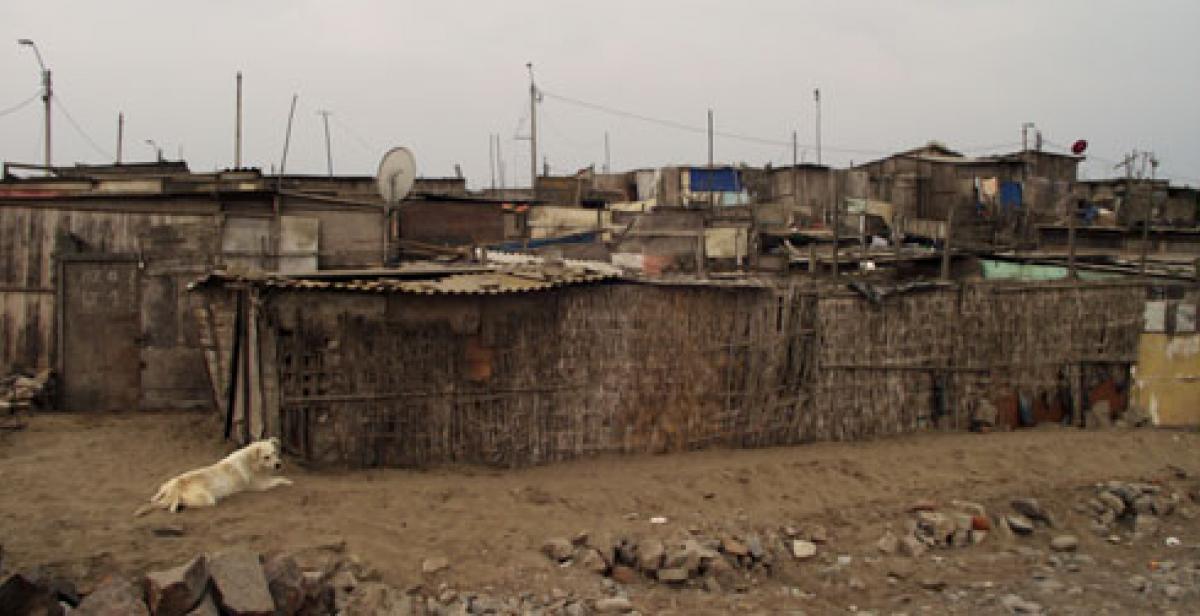I have been to a fair few places around the world, in both the Global North and the Global South, but always as a backpacking tourist. I have never lived within a community that fails to get even the smallest mention in any of the travel guides that exist. Since our arrival in Villa El Salvador on the dusty outskirts of Lima, something has really struck me. Despite having very little by way of possessions - or in many occasions even a house that is made of solid brick – people here seem outwardly happy. Complete strangers will often greet us very warmly in the street, usually with a smile and always with a charming curiosity. This of course happens the world over where ‘foreigners’ stand out and who are clearly not local. But here in Villa they are used to ‘gringos’ who come from across the globe to volunteer on various community/education projects.
The pride the locals have here for their community is clear. Tony Palomino, our host/local campaigner/advocate/well-connected-person and all-round nice guy, is a clear example of this. On a recent side trip, he took us to what at first glanced appeared to be a market, much like others in Villa El Salvador selling furniture, textiles and other such wares. Located in the industrial zone, we were left wondering why on earth he had bought us there. It became obvious after he had announced proudly that everything on sale here, was made, right here, in Villa El Salvador. Just these few words made us realise how far Villa El Salvador has come in the last 41 years since its inception.

We also took a ride on the new Metro train which terminates in Villa and runs right through downtown Lima and beyond. It was running free for a month when we visited, and to be honest, I would much prefer to have a nice, air conditioned carriage to travel from Villa to Central Lima, than I would my daily commute on the London Underground - but to compare the two on that fact alone would of course be unjust. As with most public transport improvements, with it comes investment. Let us hope this investment brings more prosperity to local people and stays within the local economy, instead of lining the pockets of big business that reinvest their profits elsewhere.
Established in 1971, Villa El Salvador was a desert until the people began to arrive. And arrive they did…in their thousands, to establish what today is a city with a population of 380,000 and covers 38 square kilometres. There is running water in some properties, many connected to the mains power supply, a sewer system servicing many homes and even some that have access to modern communications such as wifi.

Then there are of course the very poor areas; only 15 years old and by the shoreline is the Oasis District. People here live in much more basic accommodation, some made from reclaimed materials, and others made from traditional (and very cheap/flimsy) thatch and weave. Such dwellings are not yet on the main water supply, instead water trucks stop by every morning to deliver water at a cost of 2 Peruvian Soles per barrel – a strange way to look at things given the West's constant pursuit of oil. According to a local who lives here, this water can last for around only 3 days.
Even those utterly impoverished try and keep their homes maintained and as dignified as possible. I frequently hear the sound of people nailing and banging – making and creating. Nothing is wasted. Everything used, and reused. People here, especially those children whom we are teaching, seem so enthused by life, to learn and move forward with their lives.
Based on a grid system, the city is at the opposite end of the spectrum compared to New York. But I do stop and wonder what another 41 years of ‘development’ will bring to Villa El Salvador and its people, who collectively strive for betterment.
Written by Mark Chambers (Group Leader – Progressio ICS Peru). Photos: (top, by Lana Johnson) houses with woven mat walls; (middle, by Monju Meah) the new metro system; (bottom, by Mark Chambers) a view of Villa El Salvador.



